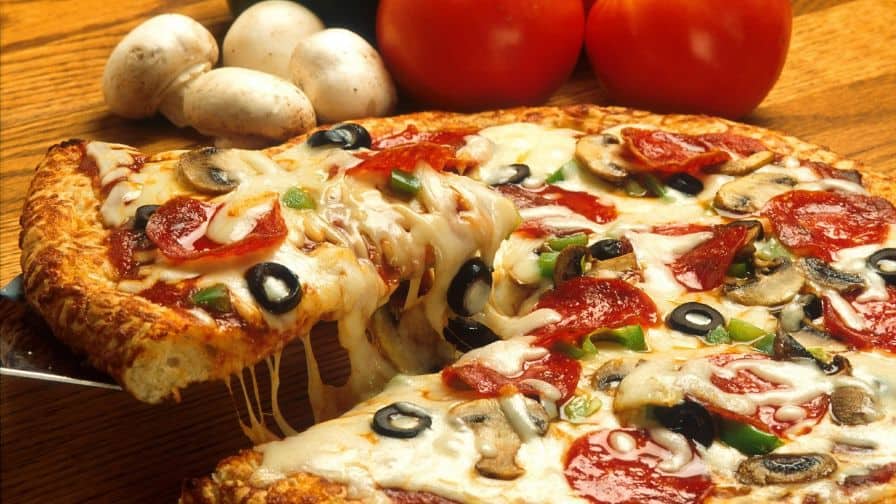Papa John’s, the third largest pizza delivery company in the world, is tapping into connected consumers through a location-based campaign with Rakuten Marketing. Recognising the integral role mobile has to play in the consumer decision journey, Papa John’s used Rakuten Marketing’s unrivalled targeting technology to reach their target audience at scale based on the location of their new York store.
Challenge
Papa John’s objective was to raise brand awareness and drive sales through digital devices from its first store in York. However, the quick-service restaurant market is a highly competitive one with many restaurant chains battling to convert hungry and time-poor customers. When it comes to sensing consumer appetite at the right time and in the right place, quick serving restaurants like Papa John’s need to be increasingly innovative to engage their audience and drive footfall.
Solution
Papa John’s and the Rakuten Marketing team built a programmatic purchasing plan with their in-house media optimisers to find the best method of targeting the right audience base.
With over 50% of all Papa John’s pizzas in the UK ordered from a customer’s desktop or mobile device, Papa John’s and Rakuten Marketing decided to implement two different methods.
Firstly, Papa John’s found that a mobile-only campaign was crucial due to the high proportion of purchases made via mobile. Using Rakuten Marketing’s proprietary DSP Papa John’s used highly accurate location based targeting on mobile, geo-fencing consumers in a three mile radius – the same radius its delivery service is based on. This highly accurate approach meant that custom audiences could be identified and were fully aligned with Papa John’s acquisition goals.
Secondly, a cross-device campaign was implemented. As the path to purchase becomes more fragmented, it’s crucial that brands are able to reach those customers who browse on mobile on different devices at a later time in order to convert them.
Process
Papa John’s used a mixture of prospecting and retargeting to reach the right audience, using market research and data to identify where the most engaged and relevant target audience would be. Based on the findings they used page level contextual targeting to reach consumers browsing, sports, food, online TV guides and other relevant websites on mobile. For the retargeting portion of the audience they used a combination of IP address and Metro classifications (Yorkshire) to give pin point accuracy and ensure that Papa John’s was only targeting users within the correct catchment area.
The cross-device campaign then allowed Papa John’s to reach consumers moving across different devices within their household. They already knew that a high proportion of Papa John’s customer base order online, and through Rakuten Marketing’s own findings Papa John’s knew that users will often research on their mobile and then go on to order on their tablet or desktop. They refined this to a retargeting solution.
Papa John’s wanted to be precise in their approach and target both campaigns based on time of day – optimising to when a user is most likely to purchase and thus drive conversions. Both campaigns were set at specific time periods; one at lunch time and one specifically targeting users later on in the day around dinner time.
Results
Papa John’s achieved strong results based on the granularity of the campaign. They drove 2:1 return on ad spend for mobile only targeting and an even more impressive 22:1 ROAS for the cross-device campaign.
Thanks to the advanced algorithms which enabled probabilistic joining of devices, Papa John’s saw that the impressions served on mobile devices were converting on desktop through the prospecting campaign, despite the fact Papa John’s was only prospecting users on a mobile device. This shows the role that mobile plays in driving desktop sales and proves that mobile is a pivotal touch point in helping to generate sales.
This campaign also allowed Papa John’s to execute a seamless brand experience across devices, as the display campaign targets customers wherever they are in the customer journey. They identified that 40% of orders in the cross device targeting strategy were attributed to a different device from where the impression originated from. The biggest driver of these cross-device orders were between smartphone and desktop, rather than smartphone to tablet. However, what was interesting to see was that 38% of those who started on a tablet converted via a smartphone, showing the various ways consumers interchange between devices.
David Carey, Digital Marketing Manager at Papa John’s comments: “Rakuten Marketing’s geo-fencing technology coupled with their prospecting and retargeting display solutions, allows us to accurately identify a specific audience and engage with them based on their behaviour across devices. By understanding our customers’ location, as well as relevant websites they are visiting on mobile, we can reach the most engaged and relevant target audience.”
Overall, this was a highly successful campaign which not only resulted in strong performance but also revealed actionable insight into consumer purchasing behaviour for Papa John’s.

